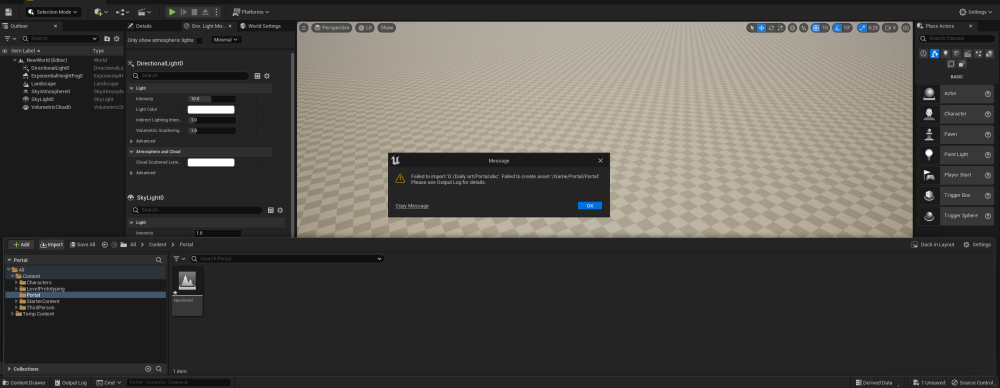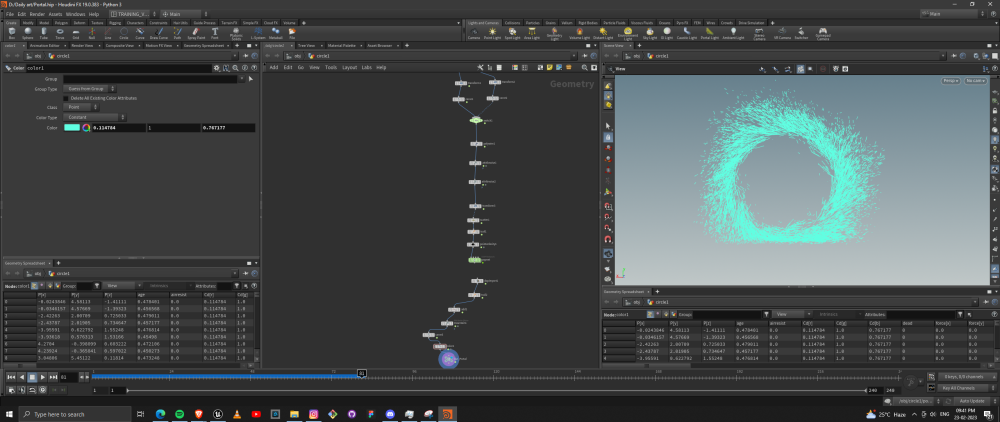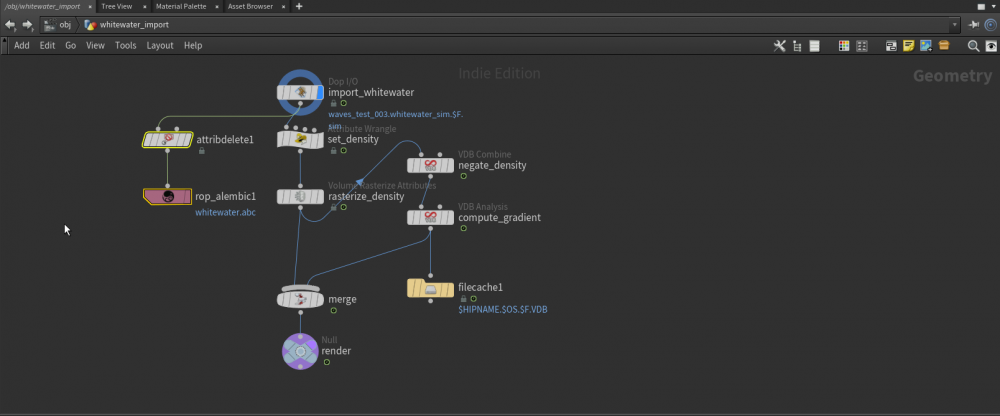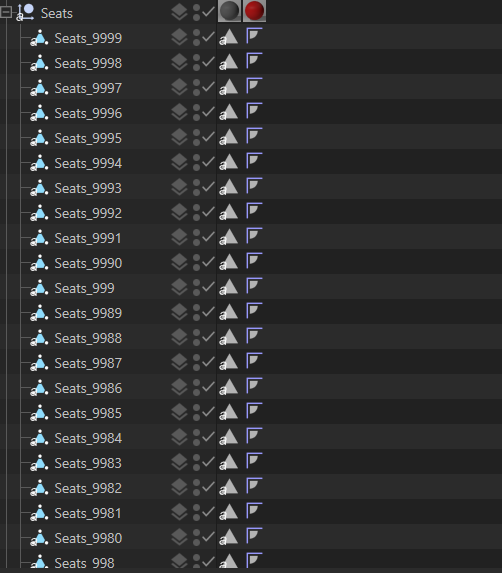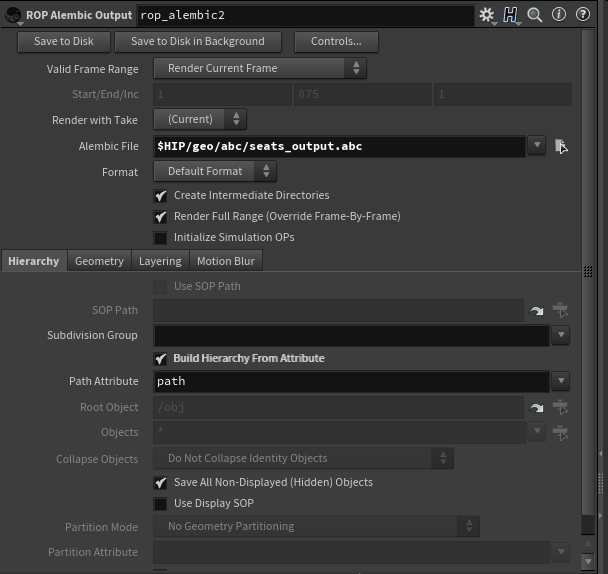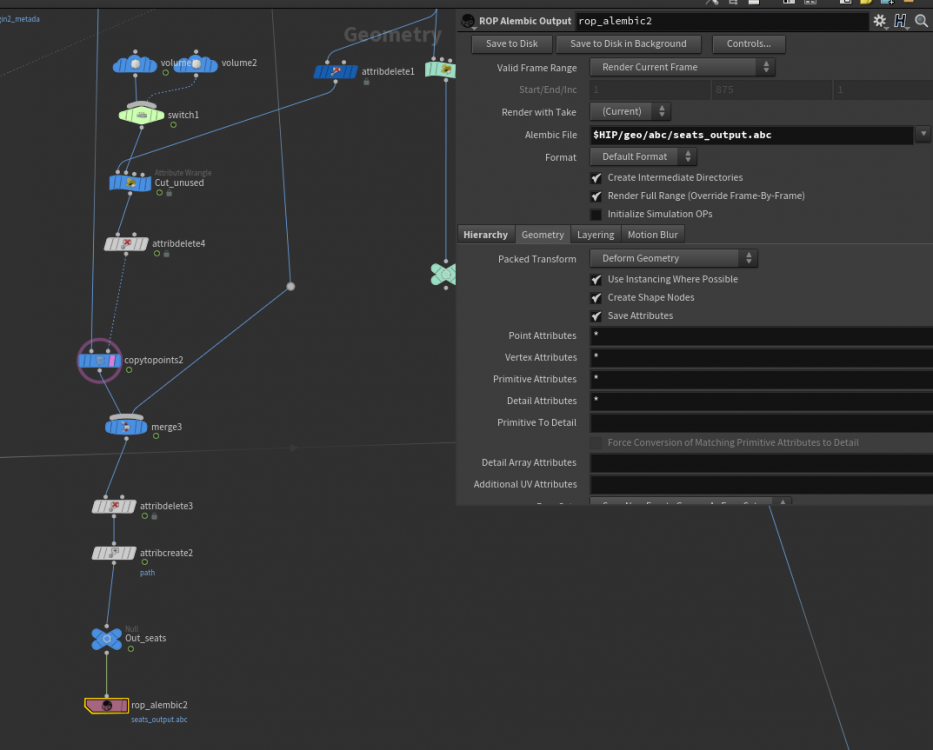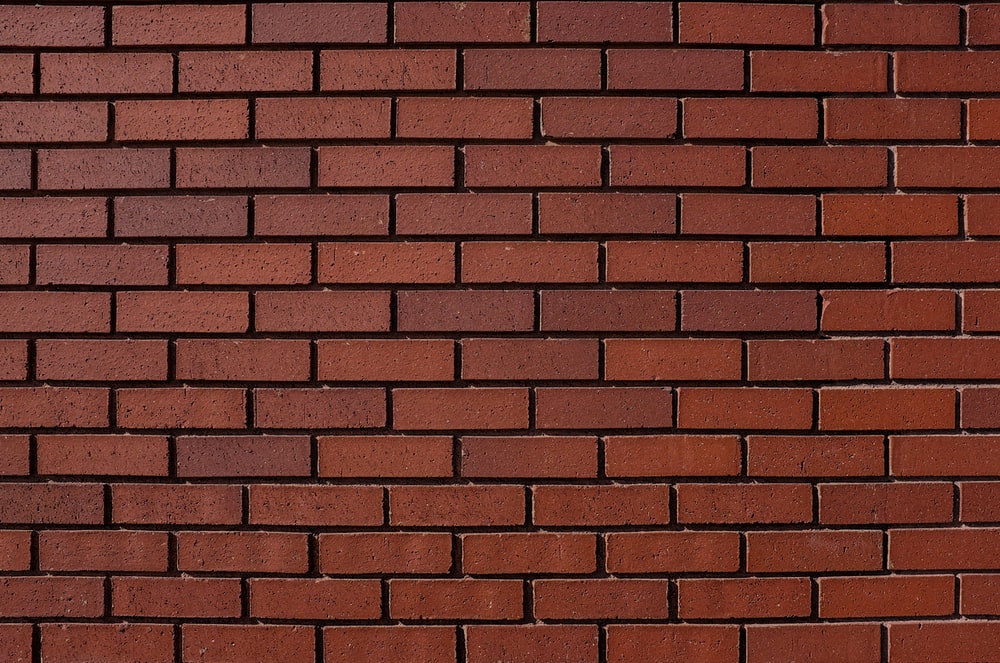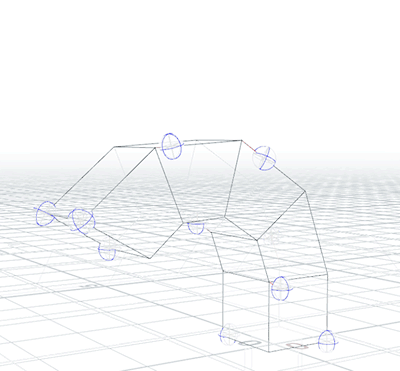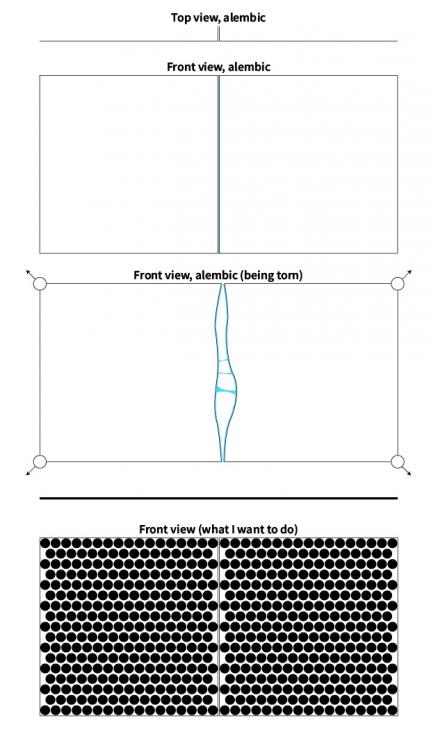Search the Community
Showing results for tags 'alembic'.
-
having a bit of a nightmare with this one... this is my shot... hulk swinging a log at thanos lol (sorry for the 6mb gif!) so i want the log to explode on impact so my log geo was created and uv'd in maya... i exported as a cache with the animation as alembic... it all seems to come into Houdini nicely... I then set it up with rbdmaterialfracture and then some uv nodes to texture the inner pieces.. i just use a simple sphere for collision that i then shrink after impact and move down through the floor to get it out of the way lol!... I have my uv's on the log and it looks fairly nice overall i think... i'm using the rbdconfigure to switch between deforming and active ....thanks to @rohandalvi for his little video tutorial on youtube Here's where it gets tricky in maya... I'm exporting the cache as alembic but its not bringing the uvs in correctly... some parts seem to be nicely textured but then a bunch of chunks aren't working... this is the log geo in Maya viewport and when rendered it doesn't texture those parts as needed... Sorry for the longwinded post i just like to use pics to help it be more clear I've included the log abc cache and a the hip file incase anyone wants to take a look and point out where i could be going wrong? Thanks everyone! Ant shot_MIND_0110_log_v01.abc shot_MIND_0110_setup_v001_clean.hip
-
Hi all! I have a clothing simulation in an alembic by marvelous designer There are places in the simulation where the fabric is twitching or behaving strangely Are there tools that can change the alembic? Sculpture animation, for example... Guys help, I can't figure it out myself! Tell me what tools you can use!
- 1 reply
-
- simulation
- alembic
-
(and 4 more)
Tagged with:
-

Packed Primitives to Maya - Best Practices
ParticleSkull posted a topic in General Houdini Questions
Hey guys, I have a scene with one object copied into thousands of points (particles). Since I'm using packed primitives, the scene gets super fast on Houdini but it's impossible to export it out. Does anyone knows what would be the best way to send it to Maya? Is there a way to, maybe, export it as a placeholder (a box for example) and, inside of maya, replace the box with the original object, maintaining it's matrix (pos, rotation, scale..)? Thx, Alvaro -
Hello guys, First I imported an object from 3dsmax into Houdini and after fracturing and simulating, now I would like to import the result (sequence of animated geometries) back again into 3dsmax. I tried to use Alembic and FBX, but the result is not satisfying, because it destroys the material IDs. What is the best workflow in this situation? Thanks for helping.
-
I made a Portal Effect in Houdini using pop network and connected the particles to line segments ,I made the Alembic file of the same to import it to unreal but I'm unable to import it in unreal it keeps showing this error in the image attached. the Alembic file is working fine in houdini though. I've also attached my hip and abc file. Portal.abc Portal.hip
-
When I import alembic into Unreal, I get an unknown file format and cannot import it. Below are the Unreal preferences Unreal Preferences:Ver5.1.1 plug-in:Groom/Alembic Groom importer(validity) Any help would be very much appreciated! Thank you hair_export.hiplc
-
Hi there, I have a camera from the alembic scene and I will transfer the same properties on the camera of Houdini, but locked in specific frames. That operation should be done for more cameras and I try to do it automatically without "copy/paste" a channel and then deleted every time, I try with a chop network and with a timeshift/warp/time range, without success. Any idea? Thanks and have a good day Matteo
-
Is there a way to reduce the filesize of this animation considering i am only transforming geo not deforming. Ideally the rop file would just save the geo just one time and then only changes in the transforms. Also can i do this with an FBX alembic.rar
-
So I have an odd problem I haven't been able to figure out yet. I have a Synology DS716+II NAS raid and using it as a shared drive so I can use HQueue to render jobs on other machines. That all works fine to render on the farm, however when I write alembic data to the NAS, I get an error everytime I try to read it back into Houdini or into maya. If I write the exact same alembic data to a local drive on my computer, then there are no read errors. And this seems to only happen with alembic and fbx data. I can write hip files and bgeo's all day to the network drive and everything reads fine, just alembic and fbx data that fails when trying to read it back from the Network drive. Does this make sense to anyone.? I would think if this was a firewall problem or permissions type thing, then no data should read or write to the NAS. The exact error I get when trying to read alembic data back into Houdini from the network drive is "Error evaluating alembic file". ANy help would be appreciated. Thanks E
-
Hey all, I have some geo based lava where im throwing the @uv through a solver offsetting the v value so it appears to flow. I'm trying to bring this into cinema, but the uv's seem to be static. When I re import the alembic into houdini, everything is animated and working. Anyone ever run into this? @uv is on vertex and shows up in cinema, just not animated. Thanks for any help in advance! untitled.mp4
-
Found an annoying problem recently in regards to rendering .ass files with instanced packed alembics. So the basic set up is packed alembic geometries being sent through a "Copy to Points" sop and are packed and instanced. These are then being manipulated a bit, and then being sent through an Arnold ROP to export a .ass file. These .ass files are then being sent to Maya to render and they have rendered great. The issue I have discovered is after I pack and instance my packed alembics. I added a little processing to the "transform" prim intrinsic to give the instances a little rotation and scale the instance from 0 to 1. Rotating the instances through the "transform" prim intrinsic works great and renders fine. However, scaling the "transform" prim intrinsic matrix causes the render to send the instances to go all over the place randomly. The Houdini viewport shows the instances scaling correctly, but after exporting the .ass and rendering in Maya the instances go all over the place randomly. This is all I am doing to scale the instances. f@grow is just an animated attribute to drive the scaling of the instances. matrix3 transform = primintrinsic(0,"transform",@primnum); matrix3 scaleMatrix = ident(); scale(scaleMatrix,set(f@grow,f@grow,f@grow)); setprimintrinsic(0,"transform",@primnum,transform*scaleMatrix); Does anyone have any experience with this? I cant upload a file just yet because its a work thing, but its possible I can recreate it. This is really driving me crazy so any suggestions would be great to just try something fresh!
-
Hi everyone! I am doing a fluid simulation in houdini that I then want to export in blender. I already achieved something, but I think I am in need of a couple of advices and I hope someone can help me here. This is the result so far after I exported all the elements in blender: VA_WaveTest_Houdini_002.mp4 Question1: how do I export whitewater separating spray from the foam and the bubbles? I am exporting whitewater using alembic to blender and it works great... However at the moment it's all in the same file, foam, bubbles and spray. While the former two I think can be rendered together, I would like to have the spray on a separate alembic or even better VDB so I can render it as a volume. How can I do so? Here you can see my current setup... I see that in the whitewater_IMPORT node group houdini extract some volume info from the whitewater particles so I tried to export those as a VDB but once I imported in blender I think that ALL the whitewater has been exported in the VDB not only the spray. I guess I would have to isolate some part of the whitewater based on some attribute, but I am a bit lost here... Can anyone give me a hand please? Question2: Is there a way to automate all the steps of the simulation caching process? So far I've been doing R&D but when the time for the final simulation come I would like to automate a bit the baking process. At the moment I cache in sequence: flip sim, whitewater sim, mesh and then I export the mesh and the white water to VDB. I would like to know if I can create some kind of BATCH of those actions so that I can leave the computer to crunch overnight and it will automatically start the next step after finishing baking the previous one. Thanks everyone for any help in advance!
-
Hey All, I have a stadium which ive generated in houdini and want to bring over to c4d for render. I have a copy to points setup with pack and instance checkbox ticked, which gives me around 15000 packed geos. Upon bringing into c4d, it seems sluggish and slow and was wondering if there is any way to bring over the instance settings for c4d. I've tried to set it to instances in the import alembic dialog in c4d but nothing seems to work. Thanks in advance
-
Hi all, so I am kind of new to rendering with karma and have come across an issue where the light interaction with the geo is looking weird. Have tried retopo of the geo which hasn't worked. Any help would be amazing
-
Hi folks, I'm having a bit of trouble with exporting an array of integers to alembic. When i create an array on the geometry and export it to alembic and import it back into Houdini again, the array is changed to an integer with the value of 0. Even if I fill in the attribute name in the ropAlembic node at the `detail array attributes`, it's converted to an integer again. Is this something alembic can't handle or am I doing something wrong? I'm totally confused right now! Hopefully somebody can help? Thnx!
-
Hey All! Currently I'm almost a month in now, trying to accomplish something inside houdini as a complete newbie. I was hoping there would be someone out here that has the knowledge to help me out a bit. Every tip is a helpful one for me at this stage entering the amazing world of houdini! So this is what I'm trying to accomplish. I'm trying to simulate a logo inside a big bath full of chocolate that slowly sinks down and drowns in the thick, viscous fluid. I got everything set up with an ocean source, narrow band particle sim and got everything cached. It looks pretty fine, until I continue to the meshing part. I've already spent quite some time trying to get to know the particle meshing tools inside of houdini, and for this case the best one turns out to be the workflow using the VDB toolset (since It gives me the most flicker free results). It get's pretty smooth as well, and I can give it a final smooth using a normals node, followed by a attribute blur that blurs out the point normals. Now comes the part where I'm getting stuck: I'd like to export this to another 3D application. In this case Cinema 4D. But unfortunately, I can't seem to figure out a way to transfer over these smoothed normals to an alembic file. What could I do to render out the pretty result in cinema, like I'm getting in houdini? Thanks a bunch in advance guys! I already learned A LOT from all the crazy talented people on this forum, so thanks a ton for that already. Stay safe,
-
So i have a very simple destruction sim and i am trying to take it to maya. I had got the obj from maya with the uv. Now when i go to export the alembic sim, the uv doesnt show in maya. Even in houdini i have to unpack the alembic file to see the uv. Could someone help me with this? brick_wall.obj brick.hip
-
i have a problem with UVs , when i export an alembic file with UVs from houdini and open the cache in maya i only get the UVs for the first frame other frames lose the UVs but when i open the same file in blender UVs work just fine
-
Hi everyone. I'm struggling to understand constraint networks. Trying to glue constrain some RBDs to an animated mesh imported from Maya (via alembic). I made a test file, and seem to have kinda, almost managed to set it up - but not quite. The constraints are there, they show up in red, but have no effect. They seem to be recreated with every frame as the animated vertices move. I would be grateful if anyone could look at my file, or point me to a working example that was made with simplicity in mind. So far, the closest thing i found was Chris Rydalch's Duplo Bear Breakdown: Constraining RBDs to Animation on Vimeo. Thanks in advance. constrain_RBD_to_deforming_mesh_v01.hip Animated_Mesh.abc
- 4 replies
-
- rbd
- glue constraint
-
(and 1 more)
Tagged with:
-
Hi, Long time lurker, first time posting. I'm working on something I can't solve without some help. It's an animated piece of vellum cloth (fairly dense) exported as an alembic and I now want to add dynamic sequins (attached with thread/wires) to it. I've tried with wires, copy to points, and following several scales tutorials but nothing is working well enough, so far. I've attached a screenshot of what I have so far and where I want to take it. If anyone has any points, an example .hip, or a tutorial of the sort, I'd love to hear/see them. Also, if anyone wants the alembic, you can find it here: https://we.tl/t-RUyzqkaG08 Thanks! //Tobi
-
Successfully exporting a small crowd using the stadium shelf tool into Unreal. The problem is I only get a single character material or texture atlas applied to ALL 50 crowd agents in the alembic. In Houdini there are 9 different texture atlases randomly applied. Since inside Unreal you lose access to the individual crowd agents, my thinking is that the correct solution is the following. For 9 material variations represented by 9 different texture atlases I would create one 3x3 master texture containing all 9 variations Then I would need to somehow create a shader that will randomly offset the UVs for each character BEFORE they get rendered as an alembic. Can anyone help with this?
-
Hi folks, I have searched around, but similar questions are either unresolved or unanswered. Hopefully now in 2019 we have a simple solution to this simple issue. I have used the Extract Transform node in Houdini, which gave me the position and rotation of my object. Prior to that, I have simmed a Rigid Body object, and used this node to replace it with a higher-resolution version for my render. Now I wish to do the same in Maya. I have a high-res model of my rigid body, and it would be a waste to export each frame in alembic. It would be great to export a simple Null with a position and rotation attribute or something like that, and constraint my object to it in Maya. It sounds simple, but I can't do it. Attaching a ROP FBX or alembic to the ExtractTransform node produces the files, but they're just a locator without any attributes in Maya. How can I get this set-up to work, or what are the alternatives? Thank you.
-
Hi. I have a alembic simulation from Houdini with 1000 objects. 1- 110 frames alembic files was 55gb its OK? 2- C4d is having a hard time reproducing it. Is there a way to bake the simulation or create some kind of proxy on C4D? Maybe the problem its from Houdini? Thanks.
-
Is there a way to retime alembic instances? i would like to have an attribute on my points (before the copy to points sop) that sets the speed of the alembic animation and the frame it starts. is possible to use an agent setup? that has this functionality built in as far as i have seen..although my alembic file is very simple geometry - not a rig or anything like that. Any tips?
-
Hi everyone, Can you please share your most efficient way of loading an alembic camera? I'm working with 2 alembic files (animated object and camera) and I'm trying to Object merge them in a new Geometry node so I can use the Timeshift node to offset their animations. I can see that it's working in the viewport(I'm seeing the camera and objects move at my specified time) , but I can't think of a way to look through the "camera" from the object merge. The goal is to control the time offset of many assets using 1 node. I guess I'm generally asking for the best practices while working with alembic cameras. I'm currently learning Houdini and I realize my questions can be disoriented,but any help would be appreciated, there's not much about alembic cameras in the documentation. Cheers!



